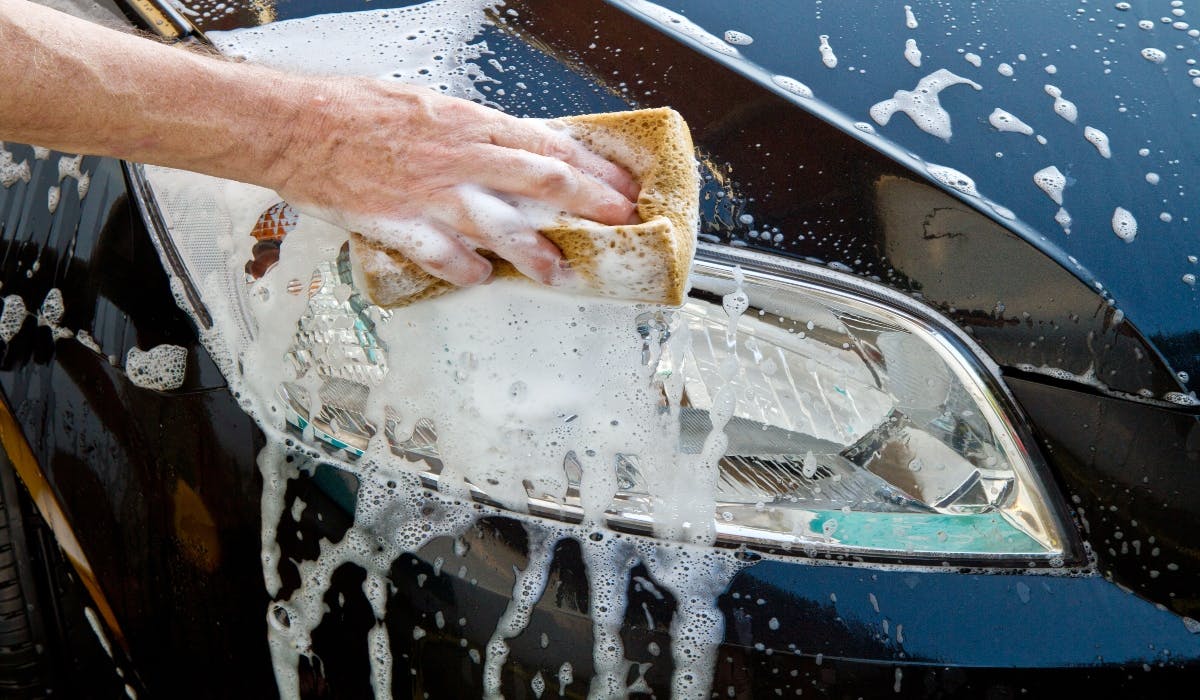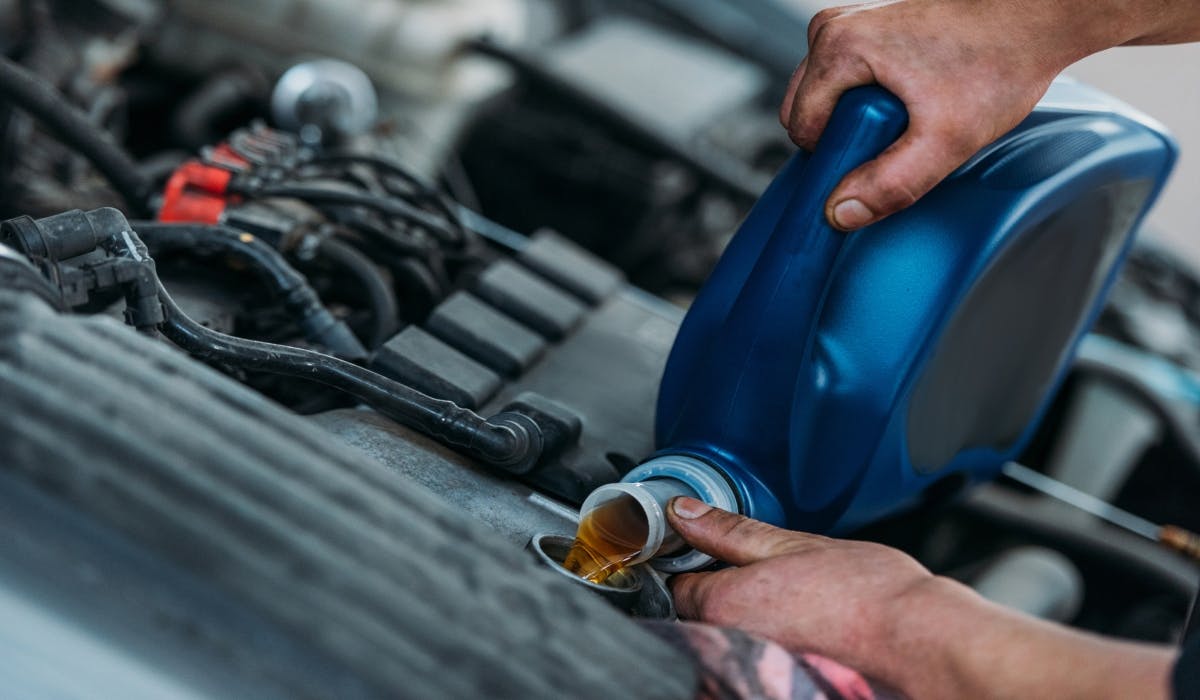The Definitive Car Maintenance Checklist
When things get hectic at work or home, minor issues with your car can become pretty easy to overlook. A little scratch or dent is unlikely to affect the performance of your car, and can be easily put back into shape the next time you see your mechanic.
But when it comes to the more complex elements that keep your car running, it’s important that you don’t leave them indefinitely.
Ongoing car maintenance, whether you’re using the car regularly or not, keeps it in its best condition, and reassures you that it’s still road-safe.
Though most elements won’t need to be checked on a day-to-day basis, carrying out consistent vehicle maintenance helps catch any problems before they require costly repairs.
Car maintenance costs can get expensive - our car maintenance tips cover the DIY checks you should carry out both regularly and on a longer term basis, and the things you'll need to outsource.

What should you check in your car regularly?
Let’s face it, no one has time to be doing a full scale pre MOT check every time they use their car. But even with a new car, there are some quick checks you can do regularly to keep your car road safe, and performing as best as it can.
1. Tyres
It’s pretty clear to even the car novices when your vehicle has a flat tyre, but it’s not as easy to tell if your tyre pressure is low.
You can check if your TPMS (tyre pressure monitoring system) light is displaying beforehand, or take a look at our guide on how to check tyre pressure with a pressure gauge.
The tyre tread depth should be a minimum of 1.6mm, which you can check with the simple 20p method. You should also keep an eye out for any irregular bulges, rips or tears.
2. Lights
You should check your lights often, as bulbs can easily go out unnoticed. You should check all interior lights are lit up correctly, and keep an eye out for any warning lights.
For the exterior, get a friend to help check that the front, rear, indicator, fog, registration plate and brake lights are all positioned correctly and lit up in the right colour.
Make sure you clean your car headlights so the bulbs have maximum impact.
3. Windscreen
You see your windscreen every time you drive your car, so there’s little effort required in keeping a regular look out for any damage, shattering, or cracks.
Even the tiniest of chips can cause substantial issues, so it’s best to have any damage addressed quickly.
While you’re cleaning your car windscreen and checking over for cracks, have a quick look over your wiper blades too. Your front windscreen is your primary view of the road, so the windshield wipers and screen wash should be able to clean and clear it adequately.
4. Body work
If your car is regularly kept outdoors, you leave your car susceptible to potential rust, dirt and damage. You can easily assess your vehicle’s bodywork, checking for any corrosion, damage, or sharp edges.
You should regularly clean your car, inside and out, to prevent any issues.
Cleaning your car’s interior regularly will also make it more enjoyable to spend time in, plus will reduce your cleaning workload when you hand it back to the leasing company or sell it on!
If you’re wondering how often you should wash your car, we’ve written a guide to working out your own schedule. Waxing will also protect the bodywork - learn how to wax a car, and how often to wax your car here too.

What can I check on a longer term basis?
Though you won’t need to carry these checks out as regularly, they’re likely to be just as, if not more, important. Especially if you’re planning lengthy road trips, it’s good to know your vehicle is operating to road safety standards.
5. Engine oil levels
Engine oil keeps your engine running smoothly, so it should be checked at least every few weeks or months, and definitely in advance of any long journeys.
You can easily check your oil by:
- Waiting for your engine to cool.
- Open the bonnet of your car.
- Find the dipstick and wipe it clean.
- Replace the dipstick, and check that the oil level falls between the minimum and maximum.
- If the oil is low, fill it up as necessary.
Your owner’s manual or vehicle handbook should specify how regularly you’ll need a full oil-change. You can get this done professionally at your local garage, or done as part of your car service. Learn how much it costs to change oil.
You may also want to clean your car engine and clean your fuel injectors while you're at it.
6. Air filter
Your air filter helps remove any debris from the air that flows through your engine, protecting it from any damage.
As the filter clogs with a build up of debris and particulate, your vehicle may begin to show signs of lower fuel economy and reduced power. Though it’s recommended to have it replaced at least every year, if you notice these symptoms then it’s worth checking to see if this is the problem.
If you’re getting in a lot of miles, particularly over grainy or sandy terrain, you may need to change it more often.
7. Brake fluid
The recommended time to have your brake fluid replaced is typically every two years, however it’s important to check it slightly more regularly.
Particularly if you feel a slowing to the quality of your brakes, it’s better to inspect your brake fluid sooner rather than later.
Look out for any dark fluid or clumps, as the fluid should be clear and smooth. If you notice any issues, or problems persist despite the fluid appearing visually fine, check in with your mechanic to identify the problem.
If you're having problems with the brakes and the fluid is fine, then see our guide on how to check your brake pads.
8. Coolant
Your coolant helps regulate the temperature of your engine and keeps your car from overheating, so you should check your coolant level at least twice a year.
Most systems will be sealed, so there really shouldn’t be any leakage, however if you’re planning a long trip, it’s important to discover any issues sooner rather than later.
You should wait for your engine to cool before opening your bonnet, then inspect the coolant tub to see whether the fluid level is between the maximum and minimum. Alternatively, you can check out the RAC’s handy video on how to check your car’s coolant.
9.Spark Plugs
Faulty spark plugs can cause engine power loss, so check with your vehicle handbook for recommendations on replacement times.
Vehicle maintenance can become costly, but when you’re not sure you have the know how to do it alone, spark plugs are best replaced by a professional.

What about maintenance for an electric car?
Electric cars often appear more high tech than the typical vehicle, so it may surprise you that electric car maintenance costs are cheaper, and far less complicated.
They have fewer moving parts than regular petrol and diesel cars, so there’s essentially a lot less that can go wrong.
But, as with all vehicles, it’s still vital to keep all car components in good condition. The main things to maintain with an electric car are:
- The car battery - Charge in line with your manual’s recommendation and avoid completely running your battery out. Even with good care, your EV battery will deteriorate over time.
- The brakes - Electric cars use regenerative braking, which means that when you apply the brakes, the electric motor slows the car and essentially recharges the battery.
- The fluids - Coolant, brake fluid, and washer fluid all need to be checked for the correct levels. Electric cars don't need oil changes.

What is the most important maintenance on a car?
Unfortunately, there’s no one size fits all for the most important maintenance jobs, as the best checks to frequently carry out really depend on the vehicle and how you use it.
It may not be the answer you want to hear, but as your car is made up of so many components, they really all need to be maintained.
If you’re struggling to find your inner mechanic, or can’t make the time for regular maintenance, it’s crucial you attend any servicing and MOT appointments. For details on how often you should service your car, check out the different types of car service.
You can also download a variety of car maintenance apps that'll help you keep on track off all those jobs!


